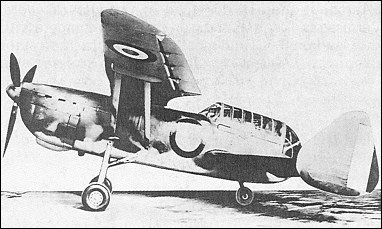JDK's Interesting aircraft: No.402 'Delanne' Lysander
Tue Nov 18, 2008 7:21 am
Just because it's a stupid idea doesn't mean you shouldn't build it.
Flew very well, BTW.




From my book on the Lysander:
http://mmpbooks.biz/books/8391717844/8391717844p.htm
I can just see it as a Fleet Air Arm aircraft. But again, why?
Cheers,
Flew very well, BTW.




From my book on the Lysander:
Petter quickly worked up a design after he and Penrose had visited Maurice and tried the Delanne 20T in France, incorporating wind tunnel test data. Harrington’s, a Hove coachbuilder, produced the rear wing and fins, while Westland modified and shortened K6127, the prototype’s fuselage. The objective was to carry a four-gun power-operated turret in the tail. The works took a year, and took its first flight on 27th July 1941; the aircraft, designated the P-12, “handled very well” in the opinion of Harald Penrose, who looped the aircraft on its first flight! Only a dummy turret and ballast was ever fitted as the proposal was abandoned before a real turret and gunner could be fitted, and the electric and hydraulic power connections had not been included. The field of fire would have been exceptional, but only after the aircraft had flown over its target, allowing the enemy on the ground to get his blow in first. The wide centre of gravity range of this configuration was of great interest, and the A&AEE explored the aircraft’s handling extensively, before it went to the RAE and was struck off charge in 1944.
http://mmpbooks.biz/books/8391717844/8391717844p.htm
I can just see it as a Fleet Air Arm aircraft. But again, why?
Cheers,
Tue Nov 18, 2008 7:48 am
I read this aircraft was built to strafe the beaches in case of a German invasion.
Tue Nov 18, 2008 7:52 am
.
This just goes to show what happens when a Lysander and Lancaster are left alone unchaperoned for the evening, with no TV available!
regards
Mark Pilkington
This just goes to show what happens when a Lysander and Lancaster are left alone unchaperoned for the evening, with no TV available!
regards
Mark Pilkington
Tue Nov 18, 2008 8:00 am
now that is fugly !! who ever dreamed up that monstrosity had 1 to many british ales!!
Tue Nov 18, 2008 8:12 am
FAFG_Xav wrote:I read this aircraft was built to strafe the beaches in case of a German invasion.
Yes. Of course as well as not being needed, it would've been too late, and probably useless.
The 'Delanne' bit was a French concept, adopted by a British company. Rather like an early Concorde, don't you think?
...had 1 to many british ales!!
Knowing where Westlands are, I'd say Scrumpy would be the problem.
Ciders made in the West Country are often called "scrumpy", from "scrump",[28] a local dialect term for a small or withered apple. The archaic spelling cyder is sometimes used, but as a marketing ploy rather than authentic usage. Ciders from Gloucestershire, Herefordshire and Worcestershire made from traditional recipes forms a European Union Protected Geographical Indication; traditional cider is also made in Devon and Somerset. Examples of a working cider house still existed here in recent times, though many have now gone. There are over 25 cider producers in Somerset alone, many of them small family businesses.
http://en.wikipedia.org/wiki/Cider
Tue Nov 18, 2008 8:18 am
Now if you could train it to fly backwards, there would be a useful aircraft!  or did it try to if you didn't keep an eye on it!?! After all, the Defiant was SO successful!
or did it try to if you didn't keep an eye on it!?! After all, the Defiant was SO successful!
Tue Nov 18, 2008 8:23 am
Man, that is one U G L Y aeroplane, and I thought that the F-4 Phantom was living proof that cement blocks could fly, and not to steer this thread into another airplane type I think the F-4 Phantom is one Tough warbird. 
Tue Nov 18, 2008 8:32 am
Where the Delanne Lysander idea came from:

http://www.aviastar.org/air/france/tushy ... nne-10.php

http://www.aviastar.org/air/france/tushy ... nne-10.php
The Arsenal-Delanne 10-C2 two-seat fighter designed by Maurice Delanne and built by the Arsenal de l'Aeronautique was of so-called Nenadovich biplane configuration, the tandem-mounted wings providing a continuous slot effect and offering exceptional CG travel. Of metal stressed-skin construction and powered by an 860hp Hispano-Suiza 12Ycrs 12-cylinder liquid-cooled engine, the Arsenal-Delanne 10-C2 prototype was virtually complete at Villacoublay when German forces occupied the factory in June 1940, work on the aircraft continuing in a desultory fashion and the first flight test being made in October 1941. After completion of the initial test programme, the aircraft was ferried to Germany for further trials. The intended armament comprised an engine-mounted 20mm Hispano-Suiza cannon, two wing-mounted 7.5mm MAC 1934 machine guns and two further 7.5mm weapons on a flexible mounting.
Tue Nov 18, 2008 8:42 pm
was anybody from russia or france involved with the development of that bowzer bird??JDK wrote:Where the Delanne Lysander idea came from:
http://www.aviastar.org/air/france/tushy ... nne-10.phpThe Arsenal-Delanne 10-C2 two-seat fighter designed by Maurice Delanne and built by the Arsenal de l'Aeronautique was of so-called Nenadovich biplane configuration, the tandem-mounted wings providing a continuous slot effect and offering exceptional CG travel. Of metal stressed-skin construction and powered by an 860hp Hispano-Suiza 12Ycrs 12-cylinder liquid-cooled engine, the Arsenal-Delanne 10-C2 prototype was virtually complete at Villacoublay when German forces occupied the factory in June 1940, work on the aircraft continuing in a desultory fashion and the first flight test being made in October 1941. After completion of the initial test programme, the aircraft was ferried to Germany for further trials. The intended armament comprised an engine-mounted 20mm Hispano-Suiza cannon, two wing-mounted 7.5mm MAC 1934 machine guns and two further 7.5mm weapons on a flexible mounting.
Tue Nov 18, 2008 8:48 pm
tom d. friedman wrote: was anybody from russia or france involved with the development of that bowzer bird??
Wellll, it was designed and built in France by a Frenchman or two.
Soooo... Is 'yes' the correct answer?